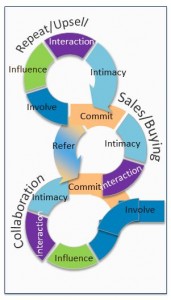The Deming Cycle or The Plan-Do-Check-Act (PDCA) model is a proven framework for implementing continuous quality improvement. It originated in the 1920s with Walter A. Shewhart. These four steps provide the framework for continuous improvement. The PDCA cycle basically starts with a plan and ends with an action in accordance to the information learned during the process. In later years Deming actually changed the Check portion to the term Study to highlight the creation and validation of new knowledge during that portion of the cycle.
Plan-Do-Check-Act (PDCA) Model:
Plan: The Plan stage should take up 50% of your efforts and it is where you define the customer objectives or his problem statement and determine the conditions and methods required to achieve them. It is imperative that you clearly describe the customer need you need to fulfill and the goals and policies needed to achieve the objectives at this stage. A specific target should be documented numerically, if possible and the procedures and conditions for the means and methods to achieve the target are described.
Summary of the Plan Stage:
- State the objective of the change.
- Define causes within current state that keep the system from achieving the objective.
- Determine baseline measurements of the existing process.
- Understand the causes that make up the problem.
- Decide what needs to change to eliminate the problem.
- Develop a plan to carry out the change
Do: In the Do stage, conditions are created and the necessary training or additional support to execute the plan is implemented. It is important that the Sales/Marketing Teams completely understand the objectives and the plan and in agreement with the procedures needed to fulfill the plan. The work is then performed according to these procedures.
Summary of the Do Stage:
- Implement the change in a trial form.
- Adjust and modify where needed.
- Document what you have learned, both expected and unexpected.
Check: In the Check stage, one must check to determine whether work is progressing according to the plan and whether the expected results are obtained. The performance of the set procedures must be checked against changes in conditions, or deviations may appear. As often as possible, the results of the work should be compared with the objectives. If a check detects a deviation (actual value differs from the target value) then a search for the cause of the deviation must be initiated to prevent its recurrence.
Summary of the Check Stage:
- Analyze the data
- Compare data to predictions.
- Summarize what was learned from the trial.
- Proceed with full implementation if results are acceptable or return to the PLAN phase.
Act: The Action stage determines that the work is not being performed according to plan or those results are not what was anticipated, measures must be devised for appropriate action and you go back thru the cycle of continuous improvement. If the target was reached you standardize the process and move on to the next project. 
Summary of the Act Stage:
- Standardize changes learned into the implementation.
- Complete the data analysis and verify to the target.
- Establish the process/controls needed to monitor
- Maintain the improvement over time.
- Determine when the next improvement cycle is needed.
When applying PDCA or Lean to sales and marketing, most think of it in terms of increasing efficiency or reducing the waste in the marketing cycle. I feel the correct method should follow the Lean Software development approach or the agile method. Without this approach it is very difficult for Lean to fulfill the three basic reasons for marketing in the first place: increase customer acquisition, customer retention and revenue spent by customer. The uses of an agile approach will focus continuous improvement (PDCA) on value, collaboration and market share and is where it differs from the application of Lean to specific marketing activities.
A Value Stream Cycle is just one of the pillars of the Lean Marketing House. There can be multiple value stream cycles depending on how many Customer Segments that you may have. Seldom does a company have one Value stream. A customer/prospect enters a particular segment through some type of involvement or awareness and is identified at the entry point of a cycle. By going around the P(Influence) – D(Interaction) – C(Intimacy) – A(Commit) circle, we improve our working relationship with the customer to a point that they either enter the next stage, which is a quicker and tighter iteration or returns through the cycle for more interaction at a lower level of interest. Repeated use of PDCA makes it possible to improve the quality of the work, the work methods, and the results.
Related Posts:
Profound knowledge for Lean Marketing
Apply Lean thinking to Sales and Marketing
Starting with Lean A3 Thinking in Marketing
The Perfect Storm has come together of Excess Capacity and Product Variety
The 7 step Lean Process of Marketing to Toyota
Lean Marketing is a Problem Centric Discipline
